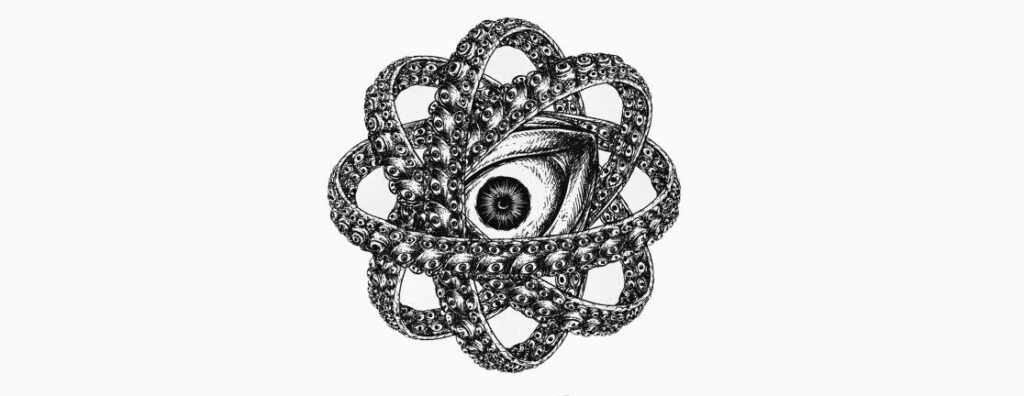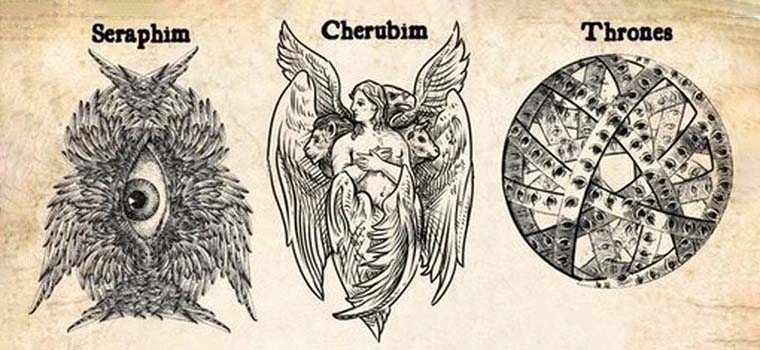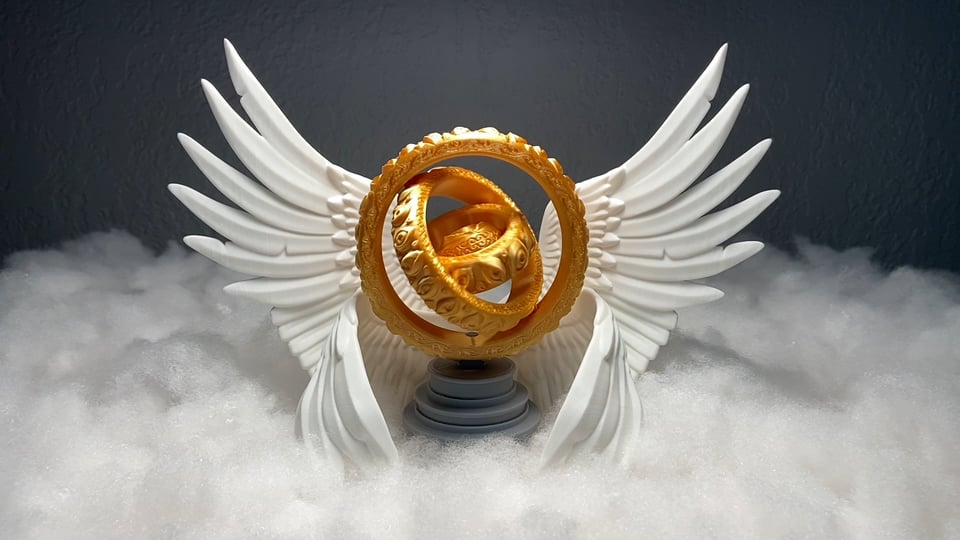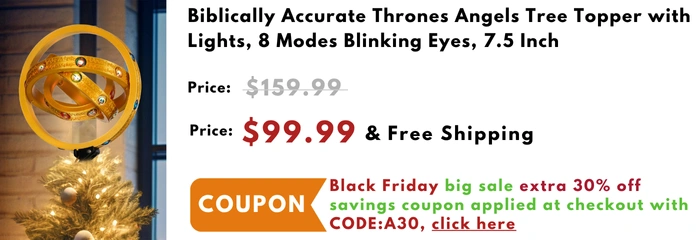Thrones Angels: Meaning, Origins and Characteristics

Even while we can speak to God directly through prayer, the Bible claims that God communicates with us through various angels. They are far more patient and forgiving than we are because they can see far beyond the mortal timeline. They are appointed to help us and are aware of our life goals, yet they never impose their will on us.
Sometimes, angels appear as scary figures, which are much different from what we see as beautiful women or babies with feathered wings. Refer to Why Are Biblically Accurate Angels Scary
These scary angels are usually thought of as biblically accurate angels. This article aims to illuminate one of the most enigmatic and awe-inspiring of these beings: the Thrones Angel.
What is the meaning of the Thrones angels?
The ‘thrones,’ also known as ‘ophanim,’ are a class of angels. They are described as enormous, interconnecting wheels with countless eyes all over them. According to legend, they have many wings and faces, which stand for their all-pervasive vision and knowledge. They are creatures that function as the actual chariots of God driven by the cherubs.
The term “Throne” is not merely a title but a testament to the grandeur and responsibility of these angels. Derived from the Greek word “thrones,” it signifies a seat of power and authority. Their primary role is to uphold and support God’s throne, ensuring its stability amidst the cosmic chaos.
Various Christian theological writings have hierarchized angels. The most influential Christian hierarchy of angels was proposed by Pseudo-Dionysius in his work De Coelesti Hierarchia. He referred to the thrones described in the Old Testament as the third rank in the first realm, with the other two higher ranks being the Cherubim and Seraphim.

The Origins of Thrones angels
Biblical accounts:
The Hebrew Bible is where the idea of throne angels first emerged:
“As I looked at the living creatures, I saw a wheel on the ground beside each creature with its four faces. This was the appearance and structure of the wheels: They sparkled like topaz, and all four looked alike. Each appeared to be made like a wheel intersecting a wheel.
As they moved, they would go in any one of the four directions the creatures were faced; the wheels did not change direction as the creatures went. Their rims were high and awesome, and all four rims were full of eyes all around.”
—Ezekiel 1:15-18
In the Book of Ezekiel, the prophet sees four majestic beings with many faces, wings, and eyes supporting God’s throne. These creatures have since been identified as the throne angels in mythological accounts of angels.
Apocryphal texts:
Additional information about the nature and functions of thrones angels can be found in apocryphal works like the Book of Enoch. Despite not being included in the mainline Bible, these works had a significant impact on early Jewish and Christian mysticism.
“I saw there a very great light, and fiery troops of great archangels, incorporeal forces, and dominions, orders and governments, Cherubim and seraphim, thrones and many-eyed ones, nine regiments, the loanit stations of light, and I became afraid and began to tremble with great terror, and those men took me, and led me after them, and said to me: Have courage, Enoch, do not fear, and showed me the Lord from afar, sitting on His very high throne.”
—2 Enoch 20:1-2
This passage emphasizes the Ophanim’s authority and connection to divine judgment, reflecting cosmic order and divine wisdom.
The mention of “thrones and many-eyed ones” resonates with the description of the Ophanim as the Many-Eyed Ones, reinforcing their role as guardians of divine secrets and instruments of holy will.
The second book of Enoch continues to tell us of the Many-Eyed Ones:
“And the Cherubim and Seraphim standing about the throne, the six-winged and many-eyed ones do not depart, standing before the Lord’s face doing his will, and cover his whole throne, singing with gentle voice before the Lord’s face: Holy, holy, holy, Lord Ruler of Sabaoth, heavens and earth are full of your glory.”
—2 Enoch 21:1
This passage further illustrates the Ophanim’s role in the celestial hierarchy, depicting them as eternal guardians of divine glory. Their unceasing praise and proximity to the heavenly throne underscore their significance as bearers of divine wisdom and authority.
Book of Daniel:
Although Daniel does not explicitly name the Ophanim, the imagery resonates with traditional descriptions in Daniel 7:9.
“As I looked, thrones were placed, and the Ancient of Days took his seat; his clothing was white as snow, and the hair of his head like pure wool; his throne was fiery flames; its wheels were burning fire.”
The vision reflects themes of judgment, authority, and cosmic order, reinforcing the role of the throne as an instrument of divine will.
Characteristics of Thrones angels
Physical appearance
As Ezekiel described him, the thrones or wheels appeared as four wheels within wheels that were constantly spinning. The wheels themselves had four wings that were on them, two to fly and two to cover part of itself. He describes these things known as thrones as having eyes all about the wheels looking in every direction, and from within them was a fire.
Furthermore, whenever it’s talking about the throne of God in Revelations, there’s no mention of the wheels being there or the Ophanim or the thrones. Instead, however, there is a mention of several elders gathered around the throne, all praising God. This has led many people to believe that perhaps the wheels within wheels and the spinning eyes and all that is just one form. That the thrones can take and have the ability to transform their physical appearance.
Abilities and powers
The thrones have a unique role; they contemplate God’s power and justice. This task, or rather a privilege, is one that could span eternity and still not get old. God’s power and justice are so infinite that the angels could never tire of contemplating it. These wills belong to God’s throne and represent God’s all-seeing wisdom.
They are the place where God sits and makes his judgments. So, it makes sense that the prophet Daniel also says that these angels are carriers of the throne of God. And that is where they get their name. As they are living symbols of God’s justice and supreme authority, they are some of the most powerful angels in existence.
Symbolism
The unique shape of the Orphanum evokes a variety of interpretations and symbols:
- Interconnectedness: Wheels within wheels reflect the intricate interconnectedness of existence and symbolize the unity of all creation.
- Eternal Movement: Their cyclical movement represents the endless creation, destruction and rebirth cycle.
- Sacred Movement: The Orphanum embodies the concept of sacred movement and transformation, illustrating the eternal movement of celestial energies that shape reality.
What do Thrones angels do
They act as counselors to the angels below them. Here is a closer look at how the ordering works:
The thrones receive illumination from God and, in turn, enlighten the lower choirs of angels about what is to be done. Their duty is to communicate to the lower angels, not actually carry out the action themselves.
They are different from the cherubim because the cherubim are enlightened about divine things. At the same time, the thrones are enlightened about created things.
Angels are the avenue, so to speak, of communication between God and every lesser being, and their primary lesson to us is that peace comes not from the world but from following the will of God.
Conclusion
Thrones Angels have attracted believers and scholars throughout history due to their mysterious appearance and essential role in the celestial order. In addition to distinguishing them from other celestial bodies, they symbolize their unique connection to divine knowledge and justice in the form of wheels with eyes and wings. As we delve into the mysteries of the Throne Angels, we are reminded of the incredible complexity of the celestial universe and the unfathomable nature of the divine.
And the idea of terrifying biblical angels has grown into a popular meme since 2020. So, if you want to put the biblically accurate angel on your Christmas tree, a throne angel tree topper is a good choice.



This as been seen a few times over reels we view I have witnessed this sighting and am pleased too say that the bible is true as I testify they do exist always give GOD the glory in JESUS name he lives in the hearts of those who love him keep the faith 💡📖🕊️🙏
I videoed one last night and it was beautiful. The glow was so bright and the colors shimmered as if covered by water, ie. the firmament. Glory to the One who created the Heavens and Earth, and Glory to the everlasting covenant given by Him.